Related Research Articles

Frank Kelly Freas was an American science fiction and fantasy artist with a career spanning more than 50 years. He was known as the "Dean of Science Fiction Artists" and he was the second artist inducted by the Science Fiction Hall of Fame.

David Cherry is an American artist, author, and illustrator of science fiction and fantasy and has also done substantial work as a marketing artist, concept artist, and 3D modeler in the game production industry. Cherry served as Lecturer and Head of the Art Department as well as Head of the master's degree Program for artists at The Guildhall at SMU, a graduate college dedicated to studies for people who want to work in the game production industry. Cherry was also an attorney, as well as a past president of the Association of Science Fiction and Fantasy Artists (1988–1990). He has been nominated eleven times for Hugo Awards, and 18 times for Chesley Awards.
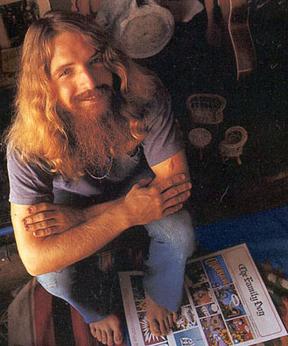
Richard Alden "Rick" Griffin was an American artist and one of the leading designers of psychedelic posters in the 1960s. As a contributor to the underground comix movement, his work appeared regularly in Zap Comix. Griffin was closely identified with the Grateful Dead, designing some of their best-known posters and album covers such as Aoxomoxoa. His work within the surfing subculture included both film posters and his comic strip, Murphy.

Gregory Gallant, better known by his pen name Seth, is a Canadian cartoonist. He is best known for his series Palookaville and his mock-autobiographical graphic novel It's a Good Life, If You Don't Weaken (1996).

Michael Whelan is an American artist of imaginative realism. For more than 30 years, he worked as an illustrator, specializing in science fiction and fantasy cover art. Since the mid-1990s, he has pursued a fine art career, selling non-commissioned paintings through galleries in the United States and through his website.

Terrance Lindall is an American artist and the co-director and chief administrator of the Williamsburg Art and Historical Center in Brooklyn, New York. Lindall's illustrations have been published in Heavy Metal, Creepy, Eerie and Vampirella, among others.
Leo Dillon and Diane Dillon were American illustrators of children's books and adult paperback book and magazine covers. One obituary of Leo called the work of the husband-and-wife team "a seamless amalgam of both their hands". In more than 50 years, they created more than 100 speculative fiction book and magazine covers together as well as much interior artwork. Essentially all of their work in that field was joint.
Robert M. Peak was an American commercial illustrator. He is best known for his developments in the design of the modern film poster.
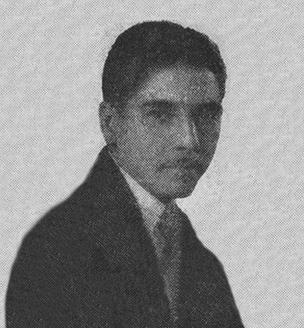
Alexander A. Schomburg, born Alejandro Schomburg y Rosa, was a Puerto Rican commercial artist and comic-book artist and painter whose career lasted over 70 years.
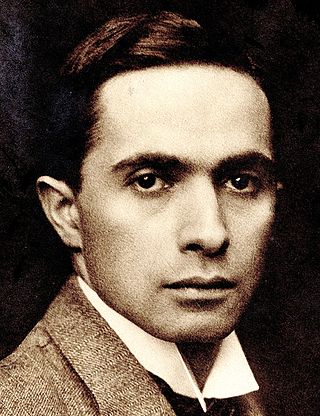
Joseph Christian Leyendecker was one of the most prominent and financially successful freelance commercial artists in the U.S. He was active between 1895 and 1951 producing drawings and paintings for hundreds of posters, books, advertisements, and magazine covers and stories. He is best known for his 80 covers for Collier's Weekly, 322 covers for The Saturday Evening Post, and advertising illustrations for B. Kuppenheimer men's clothing and Arrow brand shirts and detachable collars. He was one of the few known homosexual artists working in the early-twentieth century U.S.
Clyde Caldwell is an American artist. Self-described as a fantasy illustrator, he is best known for his portrayals of strong, sexy female characters.
Raymond McGrath was an Australian-born architect, illustrator, printmaker and interior designer who for the greater part of his career was Principal Architect for the Office of Public Works in Ireland.
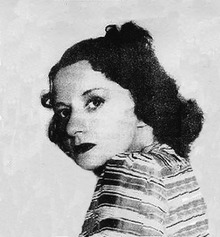
Margaret Brundage, born Margaret Hedda Johnson, was an American illustrator and painter who is remembered chiefly for having illustrated the pulp magazine Weird Tales. Working in pastels on illustration board, she created most of the covers for Weird Tales between 1933 and 1938.

Harrison Fisher was an American illustrator.

Todd Wills Lockwood is an American artist specializing in fantasy and science fiction illustration. He is best known for his work on the role-playing game Dungeons & Dragons, and for his covers for the books of R. A. Salvatore. His art has also appeared in books from Tor Books, DAW Books, and on magazine covers, including Satellite Orbit magazine in 1984–1985, Asimov's Science Fiction, Analog Science Fiction and Science Fact, Realms of Fantasy, Dragon Magazine, and Dungeon Magazine.


Edward McKnight Kauffer was an American artist and graphic designer who lived for much of his life in the United Kingdom. He worked mainly in poster art, but was also active as a painter, book illustrator and theatre designer.
Barry Blitt is a Canadian-born American cartoonist and illustrator, best known for his New Yorker covers and as a regular contributor to the op-ed page of The New York Times. Blitt creates his works in traditional pen and ink, as well as watercolors.
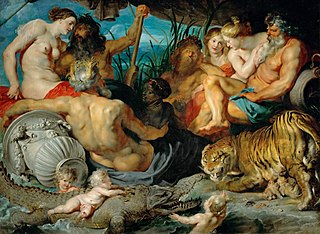
The Four Continents, also known as The Four Rivers of Paradiseor The Four Corners of the World, is a painting by Flemish artist Peter Paul Rubens, made between 1612 and 1615. Rubens painted this piece during a time of truce in the Eighty Years' War known as the Twelve Years' Truce. The painting depicts the female personifications of the four continents with the male personifications of their respective major rivers. The painting also depicts three putti in the foreground along with a crocodile, tigress, and her three cubs. An important figure in this piece is the woman in the middle who personifies Africa. She was one of the two black women Rubens painted at the time.

Tolkien's artwork was a key element of his creativity from the time when he began to write fiction. The philologist and author J. R. R. Tolkien prepared illustrations for his Middle-earth fantasy books, facsimile artefacts, more or less "picturesque" maps, calligraphy, and sketches and paintings from life. Some of his artworks combined several of these elements to support his fiction.
References
- ↑ "The Menagerie Art of Christian McGrath" (Archived 2008-07-05 at the Wayback Machine ), I-CON April 4–6, 2008.